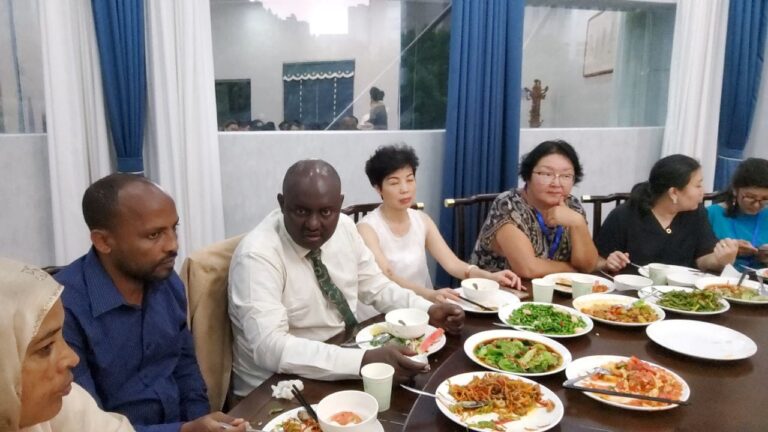Wallaga University as Ambassador of our Country Ethiopia
Wallaga University Institute of Health sciences Leadership team along with the University’s top management members have paid visit to Hubei University of Medicine (HUM) and attended to short term Summer Courses, 18-25 August, 2024.
On the onset of the visit and training, each delegate from three countries (China, Ethiopia, and Kazakhstan) have presented their countries’ Brief background of history and culture.
Introduction to China and Chinese culture By Professor Zhang Xinjun. The Country, China covers Land Area of 9.6 million sq.km. and 1.4 billion Population size and has 56 ethnic groups. Regarding its Administrative Divisions it has 23 provinces; 5 autonomous regions; 4 municipalities directly under the Central Government; 2 SAR such as Hong Kong and Macao.

Historically
Historically, China’s history is divided into four parts: Prehistoric China (Up to About 1600 BC), Ancient China (c. 1600–221 BC), Imperial China (221 BC – 1912 AD), and The Republic of China (1912–1949) or The People’s Republic of China (1949–Now). Chinese civilization began along the Yellow River in the Shang era, and spread from there when bronze age culture reached its peak. Then traditional Chinese philosophies, such as Confucianism and Daoism developed in the feudal Zhou era as China expanded in territory and population. Professor Zhang Xinjun has also presented us since the founding of the People’s Republic of China in 1949, China has entered a Communist era of stability, with the Reform and Opening Up policy of 1978 bringing in China’s phenomenal economic growth.
Scenic spots on the banknotes all represent Chinese People and provinces: their heritages, Mounts, Gorges, Landscapes, etc. China is also known by different Symbols: Tiananmen (The Gate of Heavenly Pea, Chinese Dragon (symbolizing the emperor), Dragon dance, etc. These are uniquely representing Chinese around the globe. We were also presented with Chinese Pastimes, food and manners, known and celebrated National festivals, arts and Crafts, and also three distinguishing features of Shiyan City as Mount Wudang, The Han River, and Motor City.
Wallaga University delegates and as Ambassadors of the Country, the University has presented brief background of the country under the title: “ETHIOPIA: GEOGRAPHY, SOCIETY AND HISTORY.” Tesfaye Tolesa (PhD) and Alima Jibril (PhD) have beautifully presented Ethiopia’s Geography, Natural Resources, Societies, Cultures, History and Educational Tracks. Ethiopia’s located in the East of Africa specifically located in the Horn and lies between Equator and the Tropic of Cancer (between the 30 N and 150N Latitude or 330 E and 480 E Longitude, with land mass of approximately 1,127,127 square kilometres, stated Dr. Tesfaye. Regarding its drainage system, Ethiopia has five draining systems: such as:
1. Nile River System: (drains Tekeze, Jama, anger, Dhidhessa, Dabus and Baro Rivers) flow to the North.
2. Gibe–Omo River System: flow to the Lake Rudolf in Northen Kenya.
3. Genale-Shebel River System: flow to Somalia in the Southeast border
4. The Awash River System: entirely confined to Ethiopia and links the cool rich highlands of Central Ethiopia with the hot, dry lowlands of the Danakil Depression.
5. Rift Valley Lake systems: extended from central Ethiopia to Turkana on the Ethio Kenyan border.






